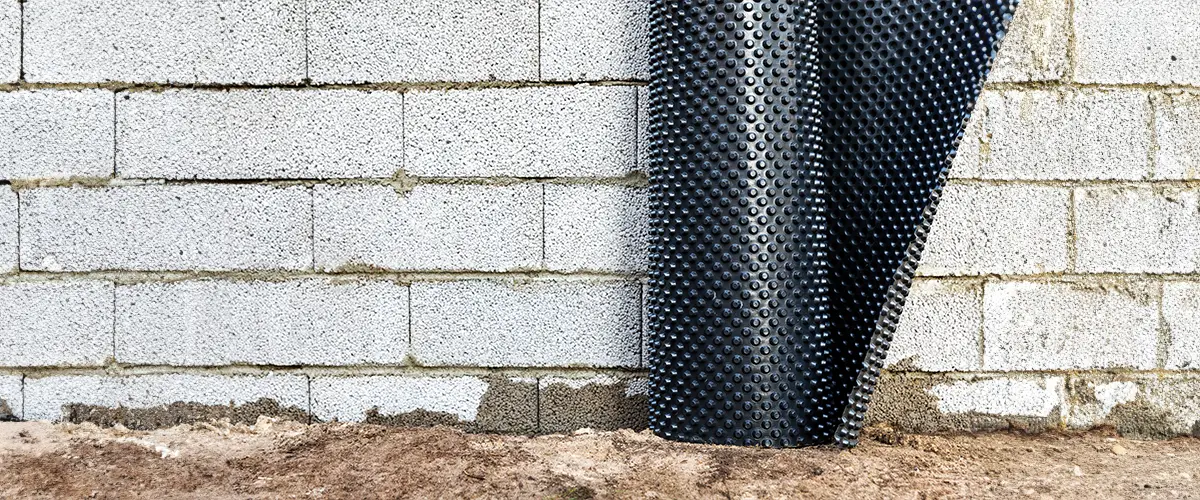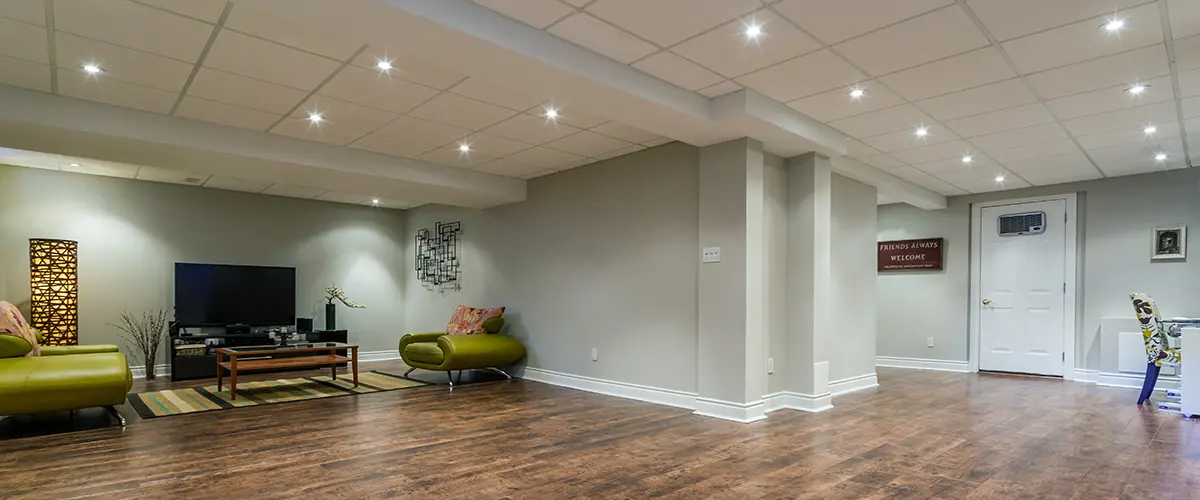Interior Vs Exterior Basement Waterproofing In Hyattsville
Choosing the right basement waterproofing method in Hyattsville can be a challenge. Many homes face water damage, especially after heavy rainfall or snow melts.
This article compares interior and exterior waterproofing, showing you their benefits and drawbacks.
Discover which option suits your home best. Keep reading to learn more!

Exterior Waterproofing: Pros and Cons
Pros: Durability, longer-lasting, more comprehensive solution, prevents water from entering foundation, suitable for heavy snow melts and heavy rainfall
- Lasts for many years. Exterior waterproofing systems are built to endure. They protect your home's foundation by keeping water out for a long time.
- Complete protection from water. This method covers the entire foundation wall, offering full moisture protection from all angles.
- Blocks water before it enters. Exterior waterproofing stops water outside before it can ever reach your basement walls or floor.
- Ideal for harsh weather. Homes in areas with heavy snowfall or intense rain benefit greatly. The system manages large amounts of water, directing it away from the house.
- Keeps foundation in top shape. By preventing water from seeping through cracks, the foundation stays strong and intact.
- Costs more money: Exterior waterproofing methods like installing a waterproof membrane on exterior walls are expensive. This is due to the materials and labor required.
- Needs digging: To apply exterior waterproofing, workers must excavate around your home's foundation. This process can be quite invasive and take several days to complete.
- Disrupts your yard: The excavation necessary for exterior waterproofing will disturb the landscaping around your house. Gardens, lawns, and any outdoor feature near the foundation may be affected.
- Requires heavy machinery: The excavation process involves the use of heavy machinery, which can cause noise and disruption in your daily life.

Interior Waterproofing: Pros and Cons
- Saves money: Interior waterproofing is generally more affordable than external methods. It uses less labor and materials, which cuts down costs significantly.
- Easy to install: The process for installing internal drainage systems and sump pumps is simpler compared to exterior waterproofing. This means your daily life gets less disrupted.
- Catches leaks early: Systems like weeping tiles and sump pits installed inside catch excess water before it causes damage. This early intervention keeps your basement dry.
- Requires less outdoor space: Houses with small yards or those close to neighboring properties benefit from interior options that don't need excavation around the home.
- Good for quick fixes: If you notice a sudden leak or increase in humidity, interior solutions can be quickly implemented to address these issues.
- Less maintenance over short term: Initially, internal systems like sump pumps may require less maintenance compared to their external counterparts, making them appealing for busy homeowners.
- Interior waterproofing focuses on managing water that has already entered the basement, rather than preventing it from entering in the first place.
- Regular maintenance of interior waterproofing systems such as sump pumps and interior drainage systems is crucial to prevent malfunctions and keep the basement dry.
- In regions with heavy snow melts and heavy rainfall, interior waterproofing may struggle to manage the excess water, leading to potential water damage inside the basement.
- When considering interior waterproofing, homeowners should factor in the need for ongoing upkeep and its limitations in handling large volumes of water from external sources.
- The reliance on interior solutions alone may not fully protect against exterior factors that contribute to basement water issues, making regular monitoring and maintenance essential.

Best Manufacturers of Basement Waterproofing Products
- Drylok Known for its waterproof paints and sealants, providing reliable moisture barriers for various foundation types.
- Sika Offers comprehensive waterproofing systems and products, renowned for exceptional efficacy and long-lasting protection.
- Basement Systems Specializes in interior waterproofing solutions and innovative drainage systems tailored for maximum basement protection.
- Tremco Produces a broad range of waterproofing membranes and sealants, excellent for both residential and commercial applications.
- HydraStone Focuses on advanced sump pump systems and dehumidifiers, enhancing internal waterproofing efforts.
Factors to Consider When Choosing Between Interior and Exterior Waterproofing
Excavation area around the basement
Excavating around the basement involves digging to expose the foundation for waterproofing work. This may disrupt landscaping but allows for a more comprehensive and long-lasting solution.
It’s important to consider this when choosing between interior and exterior waterproofing, as exterior waterproofing requires excavation, while interior waterproofing does not.
Ensuring proper drainage and moisture protection around the excavation area is crucial for effective external waterproofing. Interior waterproofing avoids excavating but may not address external water issues, making it vital to evaluate which option suits your home’s needs best.
Full moisture protection
Exterior waterproofing provides full moisture protection by preventing water from entering the foundation, making it suitable for areas prone to heavy rainfall and snow melts.
Additionally, interior waterproofing may not always address exterior water issues, potentially leaving your basement vulnerable to moisture. It’s important to consider long-term solutions for full moisture protection.
When considering full moisture protection, exterior waterproofing is more comprehensive and durable compared to interior solutions. Interior waterproofing may not provide the same level of protection against exterior water sources or heavy precipitation events.
Intended use of the basement
Consider how you plan to use the basement. Will it be a functional living space, or just for storage and utilities? The intended use will impact your choice of waterproofing.
For instance, if you intend to finish the basement and make it livable, exterior waterproofing may provide better protection against heavy rainfall and snow melts.
Conversely, if the basement is primarily for storage or utility purposes, interior waterproofing might suffice at a lower cost.
When deciding between interior and exterior waterproofing options, your planned use of the basement is crucial in determining which solution best aligns with your needs and budget.
Invasiveness of the project
Exterior waterproofing involves digging around the foundation, which can disrupt landscaping and may require re-routing of gutters. It’s a more invasive process, often needing heavy machinery and professional excavation services to remove excess groundwater from the area prone to leaks.
On the other hand, interior waterproofing is less disruptive as it doesn’t involve extensive excavation but instead focuses on drainage systems within the basement.
When deciding between these options, consider how much disruption you’re willing to handle versus long-term waterproofing benefits for your home.
Longevity of the waterproofing solution
To ensure the long-term effectiveness of your waterproofing solution, consider the overall durability and maintenance requirements. Exterior waterproofing tends to offer a longer-lasting solution compared to interior methods, as it creates a comprehensive barrier against water infiltration.
However, both options can provide nearly perfect condition if maintained correctly. Regular inspection and maintenance play a critical role in preserving the longevity of any waterproofing system, regardless of whether it’s interior or exterior.
Be sure to keep an eye on this aspect when considering your basement waterproofing choice.
Budget considerations
When considering the budget for waterproofing, homeowners should factor in the overall cost, including installation, maintenance, and long-term value. It’s crucial to not only focus on upfront expenses but also assess the lifetime costs of both interior and exterior waterproofing solutions.
By carefully comparing quotes and evaluating the cost-effectiveness of each option over time, homeowners can make an informed decision that aligns with their financial goals while ensuring a reliable solution.
To avoid unnecessary financial strain in the future, homeowners need to weigh the upfront costs against potential savings from reduced maintenance and long-lasting protection.
This proactive approach allows them to invest wisely in a basement waterproofing solution that provides enduring value without compromising on quality or efficiency.

Interior vs Exterior Basement Waterproofing In Hyatssville - FAQs
Our Professional Team
Our team has been providing basement waterproofing services for years and consists of seasoned professionals. For the best results and long-term savings, contact us at (202) 389-9121 to start your project today.
